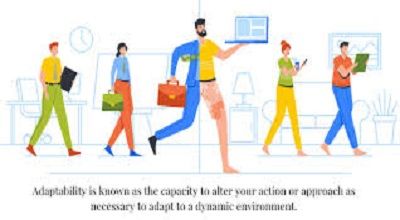Adaptability Skills
In an ever-evolving world, adaptability has become a crucial skill for personal and professional growth. Adaptability encompasses the ability to adjust to new situations, challenges, and environments with ease and resilience. In this article, we’ll explore the definition of adaptability skills, why they’re essential, and provide examples to illustrate how individuals can cultivate and demonstrate adaptability in various contexts.
I. Understanding Adaptability Skills:
A. Definition:
- Adaptability skills refer to the capacity to respond effectively to change, uncertainty, and diverse circumstances.
B. Components of Adaptability:
1. Flexibility: Open to new ideas, approaches, and methodologies.
2. Resilience: Bouncing back from setbacks and maintaining a positive attitude.
3. Problem-solving: Finding creative solutions to unexpected challenges.
4. Continuous Learning: Embracing opportunities for personal and professional development.
5. Emotional Intelligence: Managing emotions and interpersonal relationships during transitions.
II. Importance of Adaptability:
A. Thriving in Dynamic Environments:
- Adaptability is crucial in environments where change is constant, enabling individuals to thrive rather than merely survive.
B. Enhancing employability:
- Employers value adaptable employees who can navigate uncertainty and contribute effectively to organizational goals.
C. Personal Growth:
- Cultivating adaptability fosters personal growth, resilience, and a proactive approach to life’s challenges.
III. Examples of Adaptability Skills:
A. Professional Context:
1. Adapting to New Technologies:
- Example: A marketing professional learns to utilize new digital marketing tools and platforms to reach target audiences more effectively.
2. Remote Work Adaptation:
- Example: Amid the COVID-19 pandemic, an employee quickly adjusts to remote work, maintaining productivity through effective communication and time management.
3. Role Flexibility:
- Example: An employee willingly takes on additional responsibilities outside their job description to support team members during peak workloads.
B. Academic Setting:
1. Flexible Learning Approaches:
- Example: A student explores various study techniques, such as visual aids or group discussions, to adapt to different subjects and learning styles.
2. Adjusting to Virtual Classes:
- Example: Amid disruptions to traditional learning environments, a student embraces virtual classes, utilizes online resources, and stays engaged through active participation.
3. Resilience in Academic Challenges:
- Example: Despite facing academic setbacks, such as low grades or difficult assignments, a student seeks assistance, adjusts study strategies, and persists in pursuit of academic success.
C. Personal Development:
1. Lifestyle Changes:
- Example: A person adopts a healthier lifestyle, incorporating regular exercise and nutritious eating habits to adapt to new wellness goals.
2. Relationship Dynamics:
- Example: In a changing relationship dynamic, an individual practices empathy, effective communication, and compromise to navigate challenges and strengthen connections.
3. Coping with Life Transitions:
- Example: During a career transition or relocation, an individual demonstrates adaptability by embracing change, seeking support networks, and maintaining a positive outlook.
IV. Strategies for Developing Adaptability:
A. Embrace Change:
Acknowledge that change is inevitable and view it as an opportunity for growth rather than a threat.
B. Foster a Growth Mindset:
- Cultivate a mindset that values learning, resilience, and continuous improvement.
C. Build Resilience:
- Develop coping mechanisms to bounce back from setbacks and maintain emotional equilibrium during challenging times.
D. Seek feedback:
- Solicit feedback from peers, mentors, or supervisors to identify areas for improvement and adapt accordingly.
E. Practice Flexibility:
- Engage in activities that challenge your comfort zone, such as trying new hobbies or exploring unfamiliar territories.
Conclusion
Adaptability skills are indispensable in navigating the complexities of today’s world, both professionally and personally. By understanding the components of adaptability, recognizing its importance, and embracing examples and strategies for development, individuals can cultivate this vital skill set to thrive in an ever-changing environment. Adaptability remains a cornerstone of success as we continue to evolve and face new challenges.
